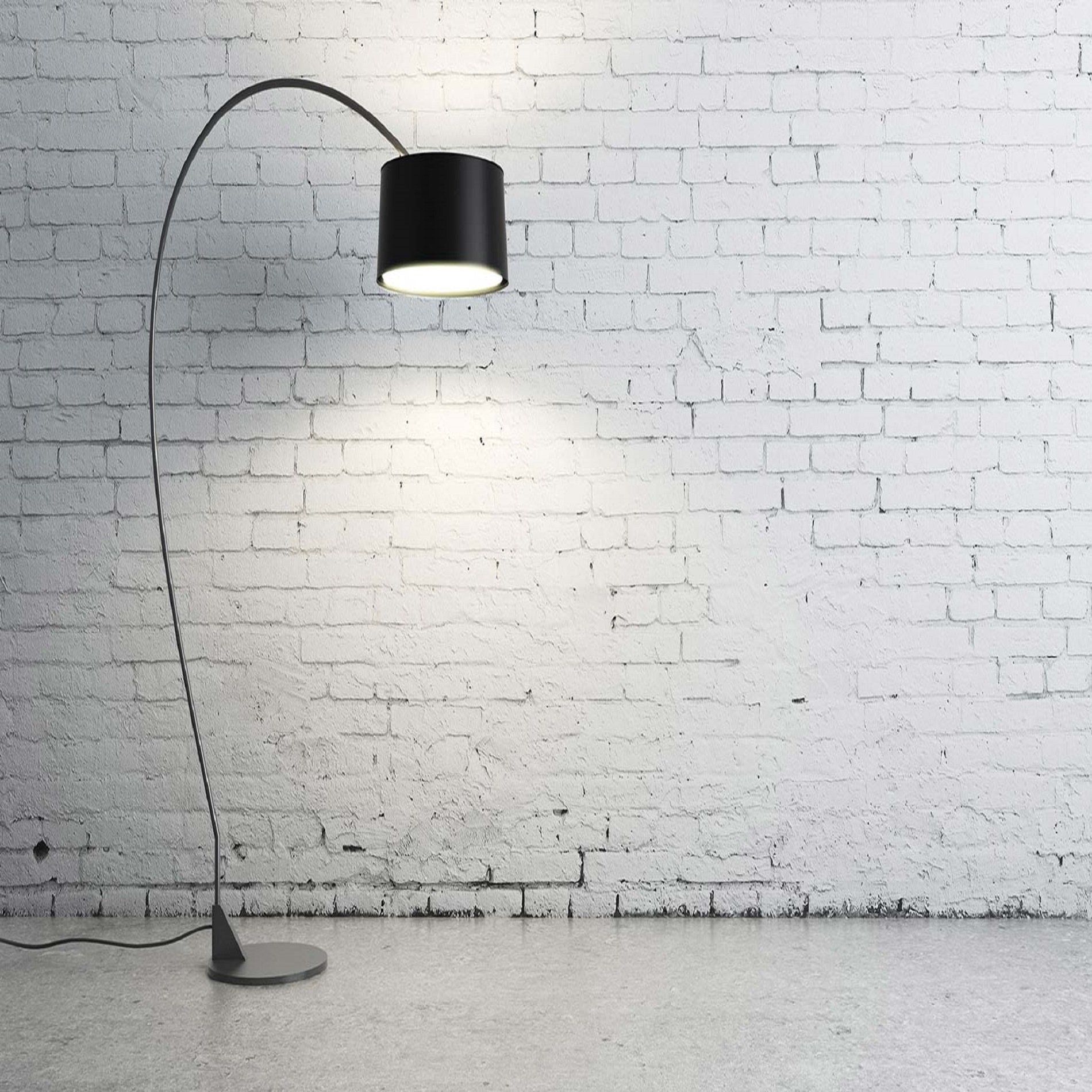The Kilgo Law Firm
Locally Owned | Same-Day and Walk-In Appointments | Emergency Consultations
We're Your Personal Attorney
The Kilgo Law Firm is your #1 choice for all your family law and criminal defense needs. We take each and every case seriously and show respect to all individuals involved. Our attorneys are graduates of the University of Alabama and the Birmingham School of Law.
Recent Posts

Many people find a car essential today, particularly individuals who do not live in urban areas. Public transportation may be unreliable, and men and women must get to work, school, medical appointments, and more. In addition, the ability to drive is a sign that a person is free. They can choose to go wherever their heart desires at a moment’s notice. They aren’t relying on someone else to take them where they want or need to go. Driving is not a right, however. It is a privilege granted by the state where the individual lives and this privilege can be revoked in certain situations. The person named on the driver’s license agrees to obey all traffic laws and drive safely on all roads. The state retains the right to suspend or revoke the license when they don't. Men and women should consult a criminal defense attorney if they lose their license following a DUI charge to navigate the process of restoring the license. Driver’s License Suspensions The state may suspend a driver’s license for several reasons. A driver with several traffic tickets might find the state takes away their ability to operate a motor vehicle, as it is responsible for keeping other drivers on the road safe. When a person fails to appear in court after being ordered to do so, the state may suspend their driver’s license. It might also take a person’s license if they own back child support to encourage the delinquent parent to catch up on their financial obligation. Driving under the influence will also lead to the suspension of a person’s license. Driving Under the Influence A person driving under the influence of drugs or alcohol will have their license suspended, and that is only one of several penalties they face. When charged with this crime, a person immediately loses driving privileges. Law enforcement has either tested this individual and found their blood alcohol content was at or above the state legal limit or the driver refused chemical testing. The driver must turn their license over when they are charged. They may have the license returned until they appear before a judge, and the judge may suspend the license again for a longer period. Implied Consent Many drivers believe they can refuse chemical and field sobriety tests to avoid losing their licenses. That is not the case. When they receive their driver's license, they agree to undergo chemical testing for drug or alcohol use. This testing may include blood tests, urine analyses, breath tests, or a Breathalyzer. When a driver refuses one or more of these tests, the law enforcement officer may arrest them and require them to undergo testing. Refusing these tests subjects the driver to harsher penalties. The refusal may lead to the driver losing their license for 90 days or being required to have an ignition interlock device installed on their vehicle. Prosecutors may also bring up this refusal in court as evidence of the driver’s impairment. Restoring Driving Privileges Once a License Has Been Suspended Drivers must know how to have their license restored once it has been suspended. They must first confirm that the license has been suspended rather than revoked. When the license has been revoked, the driver must go through all steps required to restore their driving privileges just as they would if the license were suspended. However, they must also retake their driving tests before getting their license back. Administrative license suspensions often come shortly after a DUI arrest. They differ from a license suspension related to criminal charges, such as a DUI conviction. To restore a license following an administrative suspension, the driver can request a hearing where they contest the suspension. During this hearing, the law enforcement officer who handled the arrest will share evidence of why they stopped the driver and what they found during the traffic stop. The driver then mounts a defense, and the hearing officer rules. If the hearing officer upholds the suspension, the driver must abide by all court orders and pay all fines and fees before the suspension period ends. The fines, fees, and court orders vary by the suspension type. DUI Suspensions Before restoring a person’s license when they have been convicted of a DUI, Alabama requires the driver to complete a substance abuse treatment program. The state currently has over 25 court referral programs for drivers, and each program has court referral officers and juvenile instructors. The driver might be required to sit through presentations about substance abuse and how drugs and alcohol affect their driving. The court might also have them participate in an inpatient or outpatient substance abuse treatment program. Level One treatment involves a 12-hour presentation about substance abuse laws and how different substances affect a person’s driving ability. Courts only offer this level for individuals who don’t have an identified substance use disorder. If the court presumes or determines a person has a substance use disorder, it will order the individual into Level Two treatment. The driver participates in a program that lasts at least 24 hours. The student must interact and take an active part in the treatment. This treatment program covers everything from Level One and delves further into substance abuse patterns and available support systems. Self-help meetings make up a portion of Level Two treatment programs. Level Three treatment programs include a mental health evaluation. The student is also referred for treatment in an approved substance abuse program, which may be either inpatient or intensive outpatient. Anyone 21 and under charged with DUI is considered an at-risk youth. They must take part in a 12-hour presentation. The presentation covers topics such as coping skills and conflict resolution. In addition, the youth will learn more about alcohol and drug abuse laws. Restoring the License Taking part in a treatment program is one step in restoring the license. The driver must also pay any fines associated with the suspension and obtain SR-22 insurance. The state may issue a restricted or hardship license for those needing a license to continue working or attending school. This license allows the individual to drive under certain conditions, such as when they have medical or treatment appointments to attend. Before issuing this restricted license, the court will require the driver to install an ignition interlock device on their vehicle. How Long Will the Suspension Last? Administrative suspensions may last as little as 90 days or up to three years. First-time offenders will have their licenses suspended for 90 days, second-time offenders will lose their licenses for one year, and third-time offenders lose them for three years, according to FindLaw.com. If they obtain a restricted license, it may be used for essential travel only in Alabama. Fines and Penalties Assessed with Suspended Licenses Any driver whose license has been suspended must pay a $275 reinstatement fee. There is also an additional $25 drug-related fee and a $150 interlock issuance fee. Additional fees may also be charged, and the driver might need to pay an attorney to fight the suspension. Fees are typically lower when the suspension is from something other than driving under the influence. Contact a criminal defense attorney for more information on restoring a suspended license. No two cases are identical, and the attorney can guide the person through this restoration. With their help, a person can navigate this process and get their license back at the first opportunity.

Who is going to take care of the kids after the divorce? How will visitation with the other parent be done? When divorcing, there is a lot to consider, and a lot of the contention comes down to the children. It can be hard to separate and think about the kids living at each house part-time instead of being with both parents every day. It also doesn’t help that the laws for custody can be confusing. Talking with a lawyer can help clarify custody issues and enable parents to learn more about what to expect from their situation. Types of Custody Arrangements There are various potential custody arrangements that parents must consider. Custody covers the physical custody, such as where the child lives each day. It also covers legal custody, which covers who is able to make educational, medical, religious, and other decisions. Parents who want to make sure they get as much parenting time as possible will want to work with a divorce attorney in Cullman, AL . Joint or 50/50 Custody Arrangements The most common custody arrangement is shared custody, where both parents can make legal decisions for the child and the child splits their time between both households. The amount of time the child spends at each house will vary by the specifics of the case. In some cases, one parent can override the other when it comes to legal decisions. What are the disadvantages of 50/50 custody? Shared custody works in many cases, but it can have negative impacts on the child, especially at the beginning when they are getting used to living in two different households. There also can be issues with differing rules based on which house the child is at, issues with exchanges, and more. Sole Custody Arrangements Sole custody arrangements are where one parent has physical and legal custody of the child. The other parent may have supervised or unsupervised visitation, but the child doesn’t live with them. The parent with legal custody is able to make all decisions for the child, such as what school they attend, what religion they are brought up with, and more. What are the disadvantages of sole custody? Disadvantages can include a strained relationship with the other parent, the child having issues with not being able to see the other parent as much, issues with exchanges during visitation, and more. It is important for parents to understand and mitigate these disadvantages as much as possible. What Do the Courts Consider? While shared custody is the most common type, it does need to be considered on a case-to-case basis, as it is not a good fit for all situations. Courts will consider a number of things when determining custody, including the following. The needs of the child The home environment for both parents Stability of both parents Safety of the child Ability to provide for the needs of the child Relationship between the child and each parent The disruption caused by changes after the divorce The child’s preferences if they are old enough Any potential issues that can arise Modifications for Custody Custody is legally binding once the courts have approved or set it, but that doesn’t mean that changes are impossible. It is possible, and often necessary, to change the custody arrangement after some time has passed. There are numerous reasons why custody arrangements can be changed, including the following. Child’s Needs Change The child may need to live more with another parent to get into a special school or may be better living with the other parent due to behavioral issues that appear after the divorce. Parenting Ability Changes One parent may go through life changes or medical issues and not be able to parent the way they did previously. This could mean it would be better for the child to live with the other parent more. Changes in a Parent’s Living Situation If a parent moves out of state, it may be better for the child to stay with the parent who isn’t moving so they can still live in the same place, attend the same school, and be close to their friends. Tips for Co-Parenting After the Divorce Co-parenting can be hard, especially in the beginning, but it can become easier over time. The main goal should be to focus on the child and their needs, not on the end of the relationship or any anger over the situation. Focus on the Child, Not the Feelings While there may be a lot of feelings toward the divorce and new living arrangements, it’s best not to discuss these with the child or use them as a way to vent. Instead, focus on the child and talk to someone else, whether that’s a friend, family member, or therapist, about the divorce. Work on Improving Communication Take the time to learn more about improving communication in a divorce. This may mean using written communication methods like text to avoid forgetting anything or a shared calendar to help everyone stay on the same page. Learn How to Make Decisions Together The parents must learn how to make decisions for the child together unless one parent has full legal custody. Even with full legal custody, though, it is a good idea to take into account the other parent’s desires for major decisions. Make Transitions Easier for the Child Parents should do as much as possible to make any transitions easier for the child. This includes the initial divorce as well as when they transition from one household to another. Let the Child Know What to Expect It is a good idea to let the child know what to expect going forward so everything is less confusing. This can mean talking to them about when they’ll see the other parent, how holidays are handled, and more. Co-parenting and determining custody are complex and many factors can vary from situation to situation. For parents getting divorced and worried about custody, it is important to speak with a lawyer to learn more about local laws and the impact they can have on the case. Schedule a consultation today to work with a lawyer to help find the right custody arrangement for your situation.

Who is going to take care of the kids after the divorce? How will visitation with the other parent be done? When divorcing, there is a lot to consider, and a lot of the contention comes down to the children. It can be hard to separate and think about the kids living at each house part-time instead of being with both parents every day. It also doesn’t help that the laws for custody can be confusing. Talking with a lawyer can help clarify custody issues and enable parents to learn more about what to expect from their situation. Types of Custody Arrangements There are various potential custody arrangements that parents must consider. Custody covers the physical custody, such as where the child lives each day. It also covers legal custody, which covers who is able to make educational, medical, religious, and other decisions. Parents who want to make sure they get as much parenting time as possible will want to work with a divorce attorney in Cullman, AL . Joint or 50/50 Custody Arrangements The most common custody arrangement is shared custody, where both parents can make legal decisions for the child and the child splits their time between both households. The amount of time the child spends at each house will vary by the specifics of the case. In some cases, one parent can override the other when it comes to legal decisions. What are the disadvantages of 50/50 custody? Shared custody works in many cases, but it can have negative impacts on the child, especially at the beginning when they are getting used to living in two different households. There also can be issues with differing rules based on which house the child is at, issues with exchanges, and more. Sole Custody Arrangements Sole custody arrangements are where one parent has physical and legal custody of the child. The other parent may have supervised or unsupervised visitation, but the child doesn’t live with them. The parent with legal custody is able to make all decisions for the child, such as what school they attend, what religion they are brought up with, and more. What are the disadvantages of sole custody? Disadvantages can include a strained relationship with the other parent, the child having issues with not being able to see the other parent as much, issues with exchanges during visitation, and more. It is important for parents to understand and mitigate these disadvantages as much as possible. What Do the Courts Consider? While shared custody is the most common type, it does need to be considered on a case-to-case basis, as it is not a good fit for all situations. Courts will consider a number of things when determining custody, including the following. The needs of the child The home environment for both parents Stability of both parents Safety of the child Ability to provide for the needs of the child Relationship between the child and each parent The disruption caused by changes after the divorce The child’s preferences if they are old enough Any potential issues that can arise Modifications for Custody Custody is legally binding once the courts have approved or set it, but that doesn’t mean that changes are impossible. It is possible, and often necessary, to change the custody arrangement after some time has passed. There are numerous reasons why custody arrangements can be changed, including the following. Child’s Needs Change The child may need to live more with another parent to get into a special school or may be better living with the other parent due to behavioral issues that appear after the divorce. Parenting Ability Changes One parent may go through life changes or medical issues and not be able to parent the way they did previously. This could mean it would be better for the child to live with the other parent more. Changes in a Parent’s Living Situation If a parent moves out of state, it may be better for the child to stay with the parent who isn’t moving so they can still live in the same place, attend the same school, and be close to their friends. Tips for Co-Parenting After the Divorce Co-parenting can be hard, especially in the beginning, but it can become easier over time. The main goal should be to focus on the child and their needs, not on the end of the relationship or any anger over the situation. Focus on the Child, Not the Feelings While there may be a lot of feelings toward the divorce and new living arrangements, it’s best not to discuss these with the child or use them as a way to vent. Instead, focus on the child and talk to someone else, whether that’s a friend, family member, or therapist, about the divorce. Work on Improving Communication Take the time to learn more about improving communication in a divorce. This may mean using written communication methods like text to avoid forgetting anything or a shared calendar to help everyone stay on the same page. Learn How to Make Decisions Together The parents must learn how to make decisions for the child together unless one parent has full legal custody. Even with full legal custody, though, it is a good idea to take into account the other parent’s desires for major decisions. Make Transitions Easier for the Child Parents should do as much as possible to make any transitions easier for the child. This includes the initial divorce as well as when they transition from one household to another. Let the Child Know What to Expect It is a good idea to let the child know what to expect going forward so everything is less confusing. This can mean talking to them about when they’ll see the other parent, how holidays are handled, and more. Co-parenting and determining custody are complex and many factors can vary from situation to situation. For parents getting divorced and worried about custody, it is important to speak with a lawyer to learn more about local laws and the impact they can have on the case. Schedule a consultation today to work with a lawyer to help find the right custody arrangement for your situation.

Nobody wants to be stopped by the police, even when they have done nothing wrong. If you are in this situation, knowing what to do can help reduce the stress associated with this encounter. Stay calm and never act hostile toward the officers. Know your rights and what to do so the situation doesn’t escalate. Know Your Rights Most people know they have the right to remain silent during an encounter with law enforcement. You may be required to provide your name, depending on state laws where the encounter occurs, but that is it. Firmly state you wish to remain silent and stop speaking. They cannot compel you to do so once you make this statement. Furthermore, if police stop you while driving, the right to remain silent applies to any passengers in the vehicle. Passengers might also ask if they can leave during this traffic stop. If officers say they may, they should do so quietly. The Fourth Amendment of the U.S. Constitution prohibits unreasonable searches and seizures. Law enforcement officers cannot search your person, home, or car without your permission unless they have a warrant. Have them produce this warrant so you can review it. However, officers may pat you down to check for weapons. They are permitted to do so for their safety. If the officers ask to search, say that you do not consent. They may conduct this search anyway, depending on the circumstances of the encounter. This verbal statement that you do not consent to the search may become important if authorities file charges against you. When officers enter the home, they may not search without your permission or a search warrant. If they arrest you at home or work, they have the right to search the immediate area or anywhere they can see criminal activity. Pay attention to what they do throughout this search to confirm they conduct it properly and don’t overstep their bounds. Every person has a right to a criminal defense attorney in Cullman, AL . Request a government-appointed attorney if you cannot afford to hire a lawyer. Let the officers know you would like to make a phone call. They cannot listen to any calls between you and an attorney, but they have the right to listen to all other calls you make. The officers can tell you how to request a government-appointed attorney if one is needed. Handling Police Encounters Safely During any encounter with the police, stay calm. Never volunteer information, even if it seems harmless. Use your right to remain silent or only answer direct questions, never offering additional information when doing so. Never argue with officers or bad-mouth them, as doing so could change the whole tone of the interaction. If officers attempt to pull you over while you are driving, continue operating the vehicle until you reach a place where it is safe to stop. Never stop in the middle of the road or impede traffic, as doing so puts you and the officer at risk of harm. When the vehicle is stopped, remain in the car, turn on the interior light, and put your hands where the officer may see them. Ask passengers in the vehicle to show their hands as well. Provide any documents requested by the officer during this traffic stop. They may ask to see your driver’s license, registration, and proof of insurance. Before collecting these documents, let the officer know where they are located. Reaching into a glove box or under the seat may appear to be a threatening move to the officer. Letting them know that is where the documents are and that you aren’t reaching for a weapon can help to reduce tension. Never run from a police officer. Also, do not touch the officers, as any touch could be construed as threatening in a volatile situation. If officers arrest you, go willingly. Don’t resist or become combative. Doing so could make a bad situation worse. Common Misconceptions People often believe they must consent to a search or take a breathalyzer test. They feel they are required to answer questions when asked by law enforcement. A person doesn’t have to say or do anything when stopped by the police. Failing to answer questions or consent to a search may result in a trip to the police station. Let this happen and contact an attorney with your one phone call. While the trip to the station is an inconvenience, it will probably be a short-lived one once your attorney arrives. They will work to get the matter resolved and have you released quickly. Protecting the Rights of Others You may find yourself in a situation where law enforcement is handling a matter involving another individual and you are merely a bystander. Help each other out by observing this interaction and recording it if possible. Try to capture officers’ badges and patrol car numbers with the video to show who was involved beyond what can be seen in the video. Also, ask witnesses to state their names and contact information on the video. They may need to share what they saw with authorities. If the situation is mishandled in any way, contact the internal affairs department of the law enforcement agency, so they may handle the matter. In addition, share the video with the attorneys of all parties involved in the interaction if problems arise. When law enforcement officers know they will be held accountable for their actions, fewer problems typically arise during a stop or other interaction. Law enforcement officers cannot stop bystanders from recording their interactions with individuals. However, the person taking the video must not interfere with police activity in any way. If you wish to record an interaction, do so from a safe distance. Don’t hide the fact you are recording, as police officers know they do not have any expectations of privacy while on the job. However, you may need to ask those interacting with the officers if they wish to be recorded. State laws vary on whether permission is needed so it is always better to ask. A person may come into contact with law enforcement multiple times throughout their life. All parties are responsible for what happens in each interaction. Know your rights and how to handle these interactions safely and legally. Everyone must work together to keep our country safe while ensuring our rights remain protected. This is not a job for one person alone.












